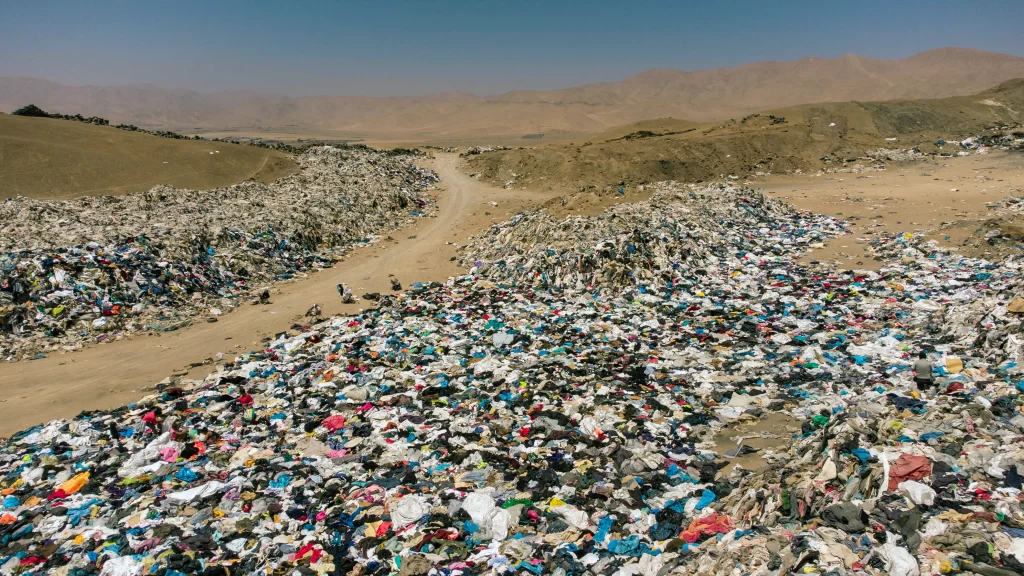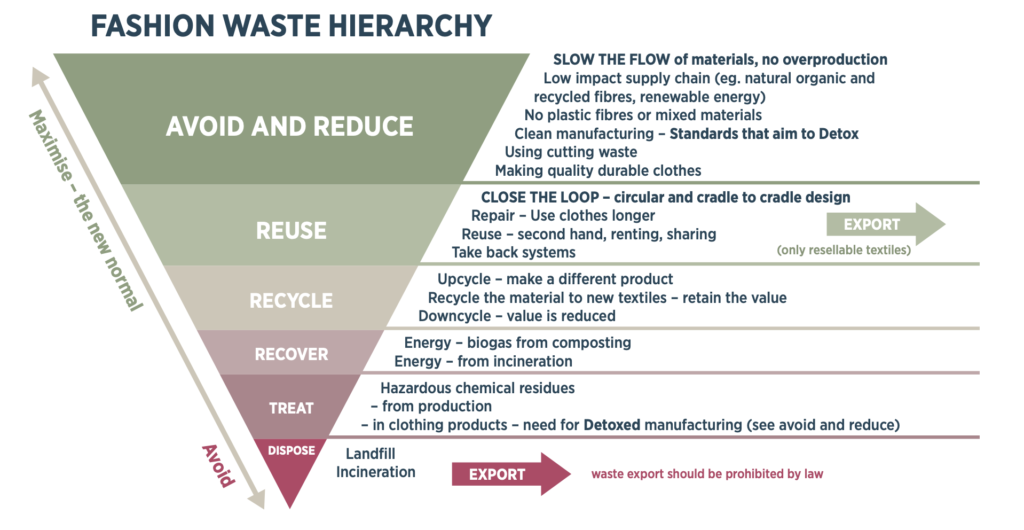By Alexandra Bloom

Australia has a waste problem.
As the second highest consumer of textiles globally we purchase around 27 kilograms of new clothing each year, with around 23 kilograms discarded, one ABS report has found.
Currently, there are only a few places a garment can go once it’s left the user.
Although Op Shops and second hand retailers do provide some relief by recirculating some items, there is still a long way to go to limit our textile waste and diversion.

At a post-consumer level, garments may be reused or resold, exported, down-cycled into rag, or put into landfill.
Once the items have left Australia however, it is unknown exactly what happens to them or if they are recycled at all.
Unfortunately, we’re not alone. This is a global issue which we’re currently seeing the effects of.
This year Greenpeace estimates that “more than 70 percent of all UK reused clothing heads overseas, joining a second-hand trade in which billions of old garments are bought and sold around the world every year.”
Greenpeace Germany 2022 ‘Poisoned Gifts’
This can be donated to impoverished communities, with some of the biggest importers of used clothing in countries such as Ghana, Ukraine, Nigeria, Kenya and Tanzania.
The word “Mitumba”, meaning bale or bundle, is used locally in various East African countries to describe the piles of clothes “donated by consumers in Western countries”. Before the 1980s they were referred to as “Kafa Ulaya”, which means “clothes from someone who died in Europe”.
However, often these items are not of a good enough quality to be worn again. With the rise of fast fashion and cheap, disposable pieces, unusable clothing is growing.
Unwearable items are then dumped in these countries and are either sent to be burnt or buried, or sometimes just left in large piles to decompose.
A large portion of the Atacama Desert in northern Chile has become a clothing graveyard, as almost 40,000 tonnes of unsellable clothing arrives to the area each year.

Regardless of their disposal method, these garments pollute the environment. Around 60 to 70 percent of the fabrics contain synthetic materials (mainly polyester) which take hundreds of years to biodegrade.
Chemicals and microplastics from these fabrics are released into air and waterways, eventually making their way into the human food chain.
It’s not just second hand clothing that gets discarded either. Masses of deadstock are destroyed from fashion brands each year due to overproduction.
In May of last year, former Minister for the Environment Sussan Ley, hosted an industry roundtable to collaboratively tackle the roughly 800,000 tonnes of textile waste generated each year in Australia. It was agreed that a “circular economy” is a critical part of a sustainable textile industry in this country.
The term has been floating around fashion for years now as it’s become the new buzzword for brands, and it basically describes an economic model that focuses on resource efficiency and regeneration through recirculating waste into other production cycles.
Realistically speaking, circularity is something that doesn’t exist yet in the fashion industry as less than one percent of clothes are recycled into new clothes.

A circular economy is important, but for now the impacts of overproduction and consumerism need to be addressed first.
Slowing the flow of materials, and making sure that garments are well-made, durable, and produced from environmentally friendly materials is the best way to reduce the amount of waste being produced.
Link to social media posts: https://www.instagram.com/s3780780/
